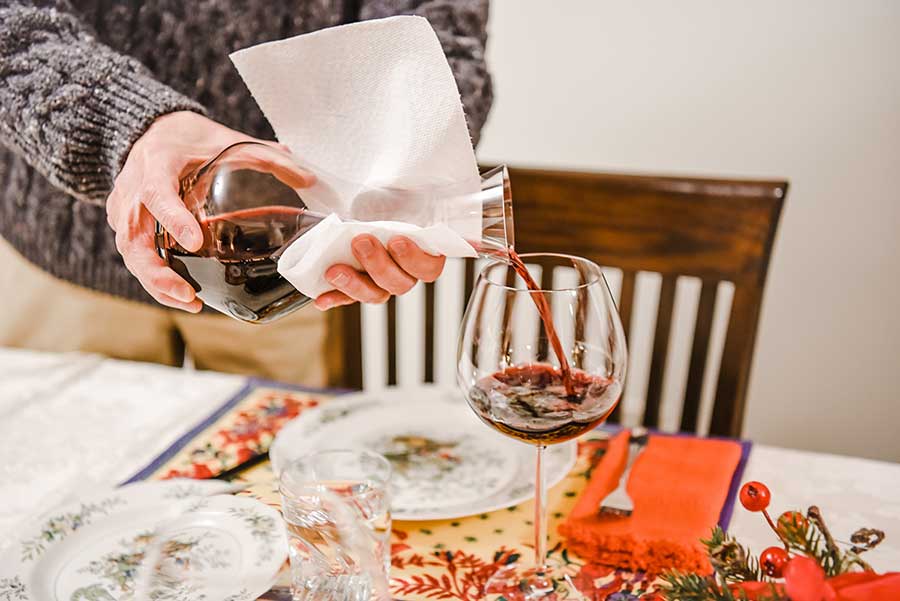Decanting wine is a process in which wine is poured from its original bottle into another serving vessel. There are a few reasons why decanting can play an important role in the enjoyment of wine, but there are a lot of factors that can affect your drinking experience when practicing this process. This guide will help you learn how to decant wine, when to decant, how to use a decanter, and more.
How to Decant Wine Using a Decanter
There are just a few simple steps that you will need to follow to decant wine properly into a decanter.
- Remove the wine bottle’s cork and wipe the neck of the bottle clean.
- Hold the neck of the bottle over a light source. You can use anything from a candle to a flashlight. The light will allow you to see the sediment, so you can stop pouring before the it goes into the decanter.
- Pour the wine slowly from the bottle into the decanter. Pitch the bottle at a slight angle to prevent the wine from splashing on the bottom of the decanter.
- Stop pouring when you see sediment entering the neck of the bottle.
- The sediment-free wine in the decanter is now ready to serve or to sit for a bit while decanting.
- Discard the remaining sediment and liquid from the original bottle.
- Serve the wine from the decanter into your guests’ wine glasses.
What is a Wine Decanter?
A wine decanter is any serving vessel that is appropriately designed to aerate wine and separate the liquid from the sediment in its original bottle. The typical decanter has a distinguished look, usually featuring a flared base, a narrow neck, and a flat or slanted top.
Why and When to Decant Wine?
There are two reasons why decanting wine can help improve the drinking experience – it separates the wine from sediment, and it aerates the wine. This allows your guests to enjoy the wine’s purest flavor and aromas. And by pouring the wine from its standard bottle into a more elegant decanter, you can also make for a more appealing wine presentation.
It is important to note that not all wine needs to be decanted. Sipping the wine immediately after opening the bottle will help you know if it should be decanted. For instance, if the wine tastes overly bitter, lacks aromas, or gives off an odor like rotten eggs or a struck match (both of which are signs of hydrogen sulfide), then you will improve the taste of the wine by pouring it into a decanter and allowing it to breathe for a bit before serving.
How Long to Decant Wine?
There is no exact science that dictates exactly how long you should decant wine. While most sommeliers will usually recommend most varieties of red and white wine to be decanted for at least 20 to 30 minutes before serving, the truth is different wines decant differently. For instance, younger reds and intensely tannic vintages may need a few hours or more in a decanter before they reach optimum taste whereas older wines can become stale tasting if left in the decanter for too long.
The best thing to do is to experiment with decanting your favorite wines to see what works best. Start by opening your bottle of wine and having a sip immediately, then pour the wine into a decanter and taste it again after it has breathed for about 20 minutes. Continue tasting the wine at regular intervals until you have achieved your desired taste.
How to Decant Wine Without a Decanter
If you opened a bottle of wine and you feel that it needs to be decanted but you do not own a decanter, there are options open to you. You can pour the wine into just about any serving vessel that allows you to separate the wine from its sediment, like a pitcher, a carafe, a clean vase, a few pint glasses, or even a bowl. After decanting the wine, you can then double decant it if you choose. This involves pouring the wine back into its original bottle after first removing the sediment to ensure the bottle is clean.

